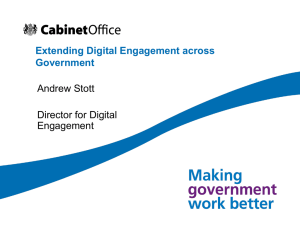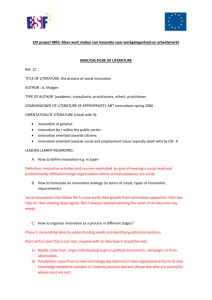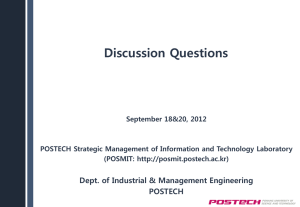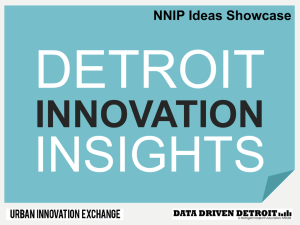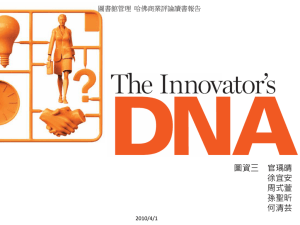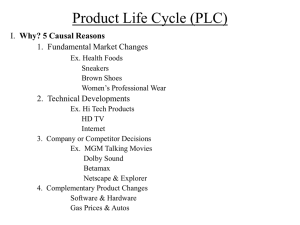Discussion Questions
advertisement
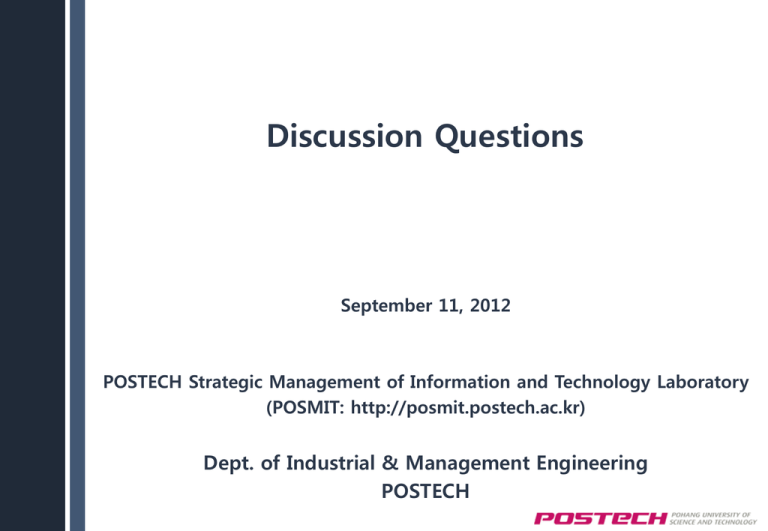
Discussion Questions September 11, 2012 POSTECH Strategic Management of Information and Technology Laboratory (POSMIT: http://posmit.postech.ac.kr) Dept. of Industrial & Management Engineering POSTECH Discussion Questions (1/4) ■ Chapter 2. Sources of Innovation 1. What are some of the advantages and disadvantages of a) individuals as innovators, b) firms as innovators, c) universities as innovators, d) government institutions as innovators, e) nonprofit organizations as innovators? Advantages Individuals Firms Universities Disadvantages • Many creative ideas • Understanding their own unmet needs • Great incentive to solve their own problems • Very limited capital resources to invest • Limited range of knowledge and skills • Significant capital to invest • Complementary assets to produce, distribute, etc. • Management systems to organize innovative efforts • Rejected projects that don’t appear to have an immediate commercial return • Project chosen on commercial return rather than importance to customers or society • Extensive knowledge and other resources • Investment in long-term or risky projects for purposes of advancing science (rather than being pressured for immediate commercial return) • Ties to multiple other external entities (e.g., government, non-profits, etc.) • Esoteric projects rather than those with immediate applications • Lack skills or resources to implement innovations in the marketplace • Lack of financial discipline 2 Discussion Questions (2/4) ■ Chapter 2. Sources of Innovation 1. What are some of the advantages and disadvantages of a) individuals as innovators, b) firms as innovators, c) universities as innovators, d) government institutions as innovators, e) nonprofit organizations as innovators? (Cont’d) Advantages Government Nonprofits Disadvantages • Extensive knowledge and other resources • Investment in long-term or risky projects for purposes of advancing science(rather than being pressured for immediate commercial return) • Great influence over other stakeholders or contributors to innovation (e.g., universities, firms, non-profits) • Lack of complementary resources to implement innovation in the marketplace • Lack of financial discipline • Ties to multiple other external entities (e.g., universities, non-profits, etc.) • Mission-based focus that enables them to pursue long-term or risky projects • Credibility advantages for eliciting the cooperation of other stakeholders • Relying on external sources of funding such as charitable donations or grants, which can constrain capital resource • Lack complementary resources to implement innovation in the marketplace 3 Discussion Questions (3/4) ■ Chapter 2. Sources of Innovation 2. What traits appear to make individuals most creative? Are these the same traits that lead to successful inventions? Creative ability: Function of their intellectual abilities, knowledge, style of thinking, personality, motivation, and environment – Expertise (Domain-relevant skills) • Only a moderate degree of knowledge of a field (Not extensive knowledge of field) – Creativity Skills (Creativity-relevant skills) • Ability to to think in novel ways of their own choosing • Ability to discriminate between important problem and unimportant ones • Self-efficacy, tolerance for ambiguity, and a willingness to overcome obstacles and take reasonable risks – Intrinsic motivation 4 Discussion Questions (4/4) ■ Chapter 2. Sources of Innovation 2. What traits appear to make individuals most creative? Are these the same traits that lead to successful inventions? (Cont’d) Innovation: Implementation of those ideas into some new device or process – Entrepreneurial skills • Implementation of novel, useful ideas to establish a new business or new program to deliver products or services • Necessary to convert an idea into a new product or process 5
